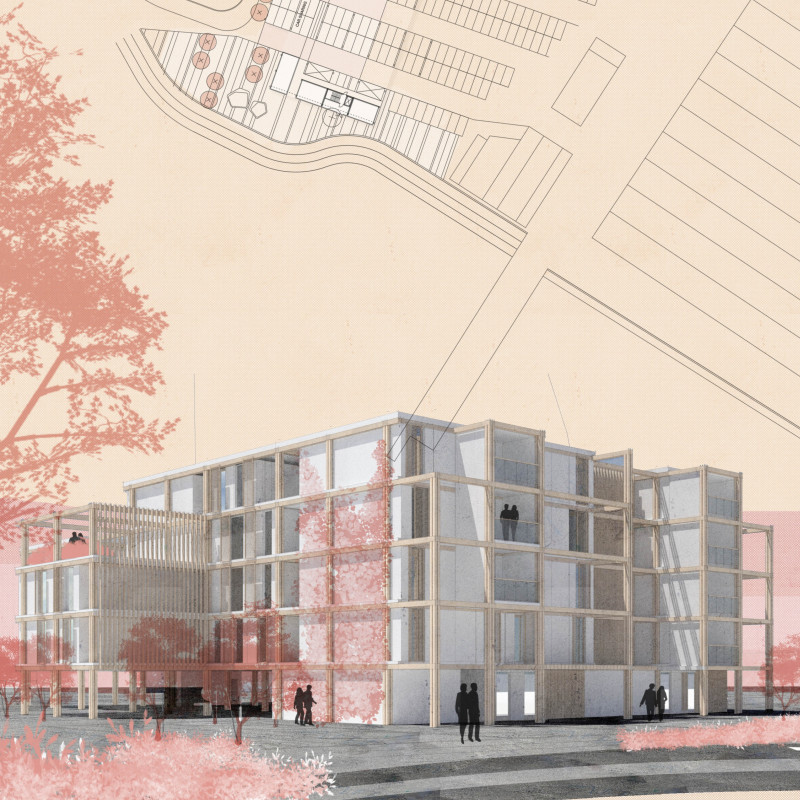5 key facts about this project
The architectural design emphasizes an open layout, fostering interactions among occupants and creating a sense of inclusivity. The ground floor invites the public through large, transparent glass facades that blur the boundaries between the interior and exterior, allowing natural light to penetrate deep within the structure. This careful attention to light not only enhances the aesthetic quality of the spaces but also promotes well-being among its users, showcasing how architectural decisions can directly impact livability.
Significant attention has been given to the choice of materials used throughout the project. Concrete serves as the primary structural component, providing durability, while warm wood accents soften the overall appearance and evoke a sense of comfort. The use of glass not only maximizes views but also facilitates passive solar heating, thus contributing to the building's energy efficiency. In addition, the incorporation of steel elements introduces an industrial edge, effectively balancing robustness with elegance. The choice of brick as a secondary material pays homage to local architectural traditions, creating a dialogue between the new construction and its context.
An important aspect of the design is the integration of green spaces, which includes a landscaped rooftop that provides not only recreational space but also insulation to lower heating and cooling costs. These green areas are strategically placed to enhance the environmental performance of the building, showcasing a commitment to ecological sustainability. The design also promotes biodiversity by incorporating native plants that require minimal maintenance, thus reinforcing the project's ecological considerations.
Unique design approaches have been employed to address the challenges of the site. Careful site analysis informed the placement of the building to protect against harsh weather conditions while capitalizing on optimal sunlight exposure. Furthermore, the implementation of smart technologies within the building enhances operational efficiency. Automated systems for lighting, heating, and ventilation respond to the needs of the users, promoting sustainability and reducing energy consumption.
The project effectively redefines its environment and serves multiple functions, which include public gathering spaces, community activities, and private areas for reflection and engagement. By prioritizing user experience, the design achieves a balance between open communal areas and private zones, catering to diverse needs while promoting a strong sense of community.
Throughout the project, careful consideration has been given to the finer details, which include interior finishes that reflect personal touches in craftsmanship, creating spaces that resonate with users on an emotional level. Textured surfaces, variations in color, and thoughtful layouts all contribute to a cohesive environment that feels both inviting and functional.
As a significant contribution to contemporary architecture, this project reflects a holistic approach to design that considers not only aesthetics but also function, sustainability, and the community's needs. It is an exemplary model that encourages thoughtful engagement with space and environment, inviting visitors and users alike to explore its various features. For those interested in delving deeper into the architectural plans, sections, and designs, a comprehensive presentation of the project is available, providing an opportunity to appreciate the fullness of its architectural ideas and design philosophy.






















